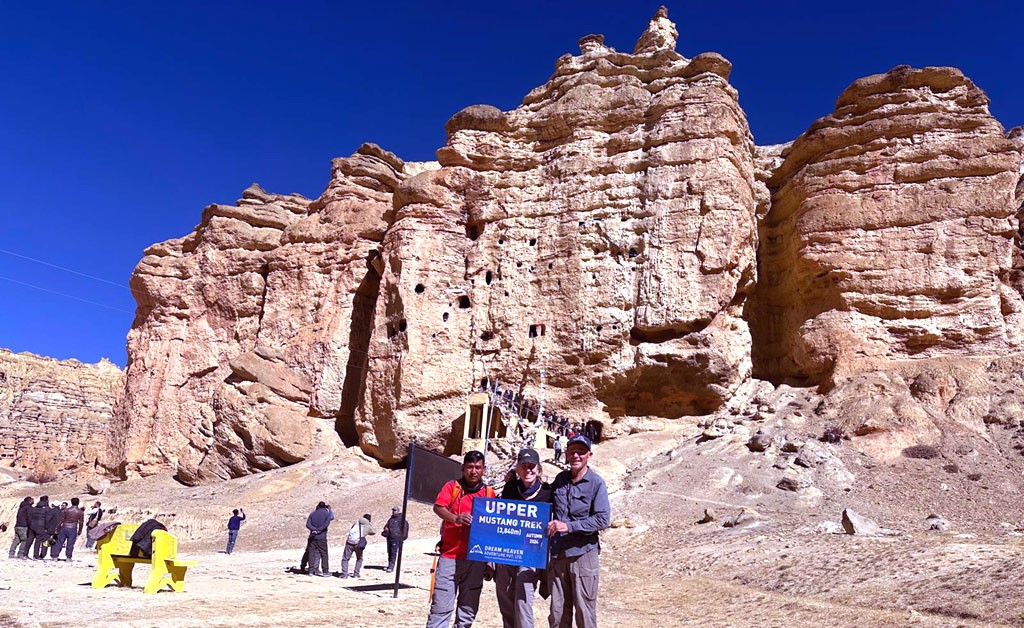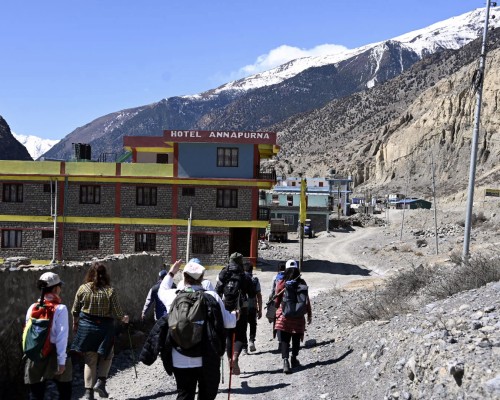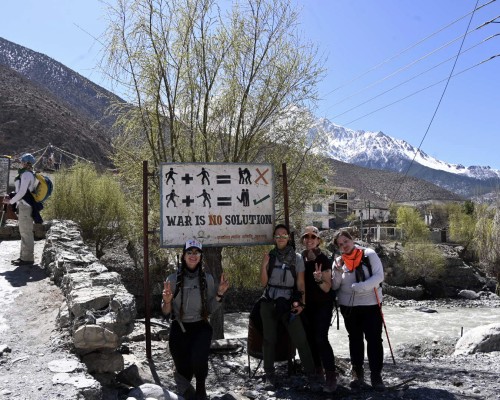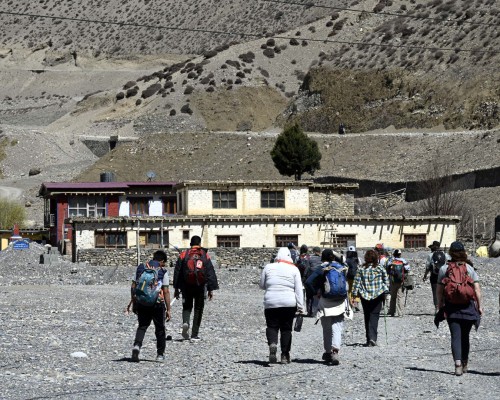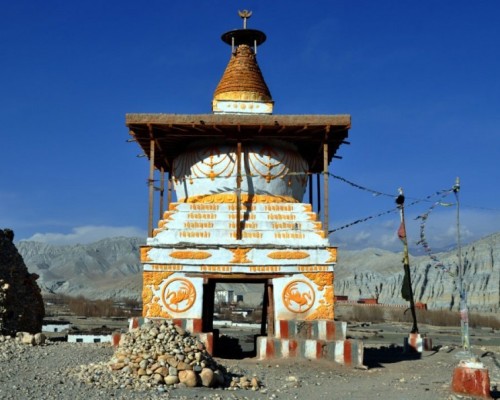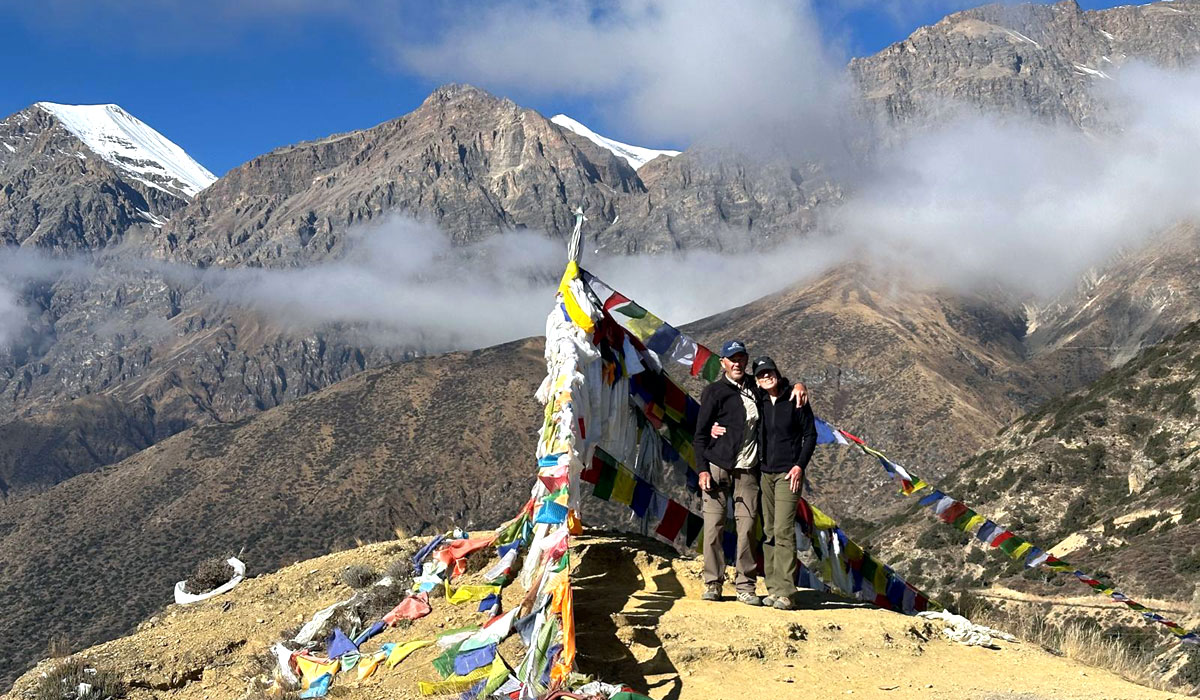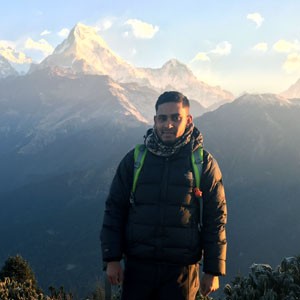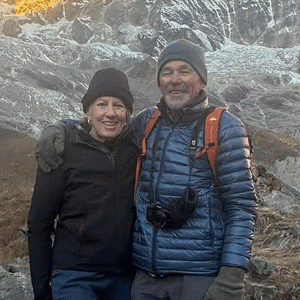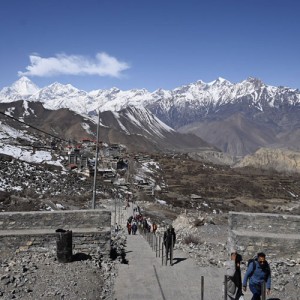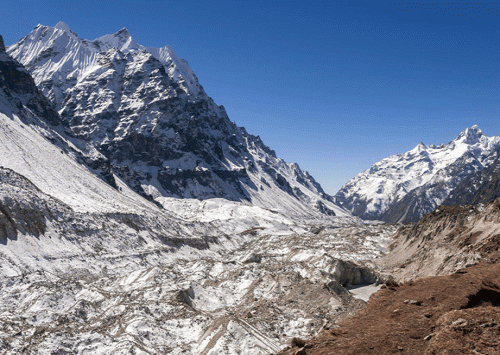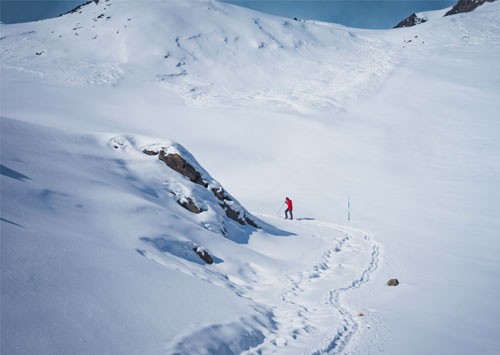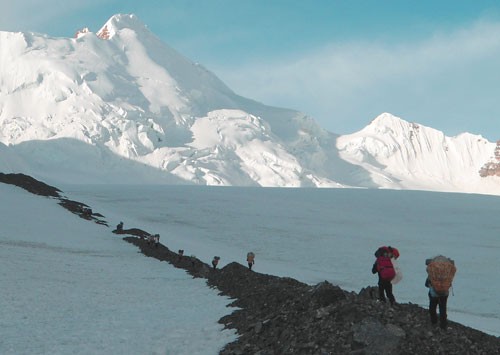The Upper Mustang is a remote and beautiful region in the northwestern part of Nepal. Known as the "Last Forbidden Kingdom," this region remained closed to outsiders until 1992. People also claim that it was once part of the ancient Tibetan empire.
Due to its strategic location connecting the trading route between India and China, this region, historically known as 'Lo,' developed into a kingdom. A family known as the Rajas of Lo ruled the independent Kingdom Lo. Even after the unification of Nepal by King Prithivi Narayan Shah, this trek region remained independent with its own ruler. The monarchy of Lo officially ended only when Nepal became a republic in 2008.
People recognize this Upper Mustang Trekking area for its ancient caves and Tibetan Buddhist influences. Some of these caves are thousands of years old, with ancient paintings. The people of this region speak the Tibetan language. This region is rich in ancient rituals and festivals like Tiji. Tiji is a large festival that features traditional music, dances, and prayers.
Upper Mustang route in Nepal is a unique and serene location, preserving its natural beauty and culture despite the influence of modern life. It is a magical place with old traditions, stunning views, and friendly people.
Highlights of Upper Mustang Trek
Upper Mustang trek offers a journey through cultural traditions and nature. It is a blend of remote beauty and cultural richness. Some of the main highlights of the Upper Mustang trip in Nepal are:
Tibetan culture
The Tibetan culture greatly influences Upper Mustang. The local people of this region practice Tibetan Buddhism, and their way of life, language, and traditions are similar to the Tibetan culture. The region's residents use the dialect known as Mustangi as their primary language, and they incorporate Tibetan script into their religious rituals. The food in Upper Mustang is also based on Tibetan cuisine. The locals of this region have kept their ancient traditions and continue following their Tibetan roots.
Lo Manthang
Lo Manthang once was a capital of the Upper Mustang Region. It is the walled city with its Tibetan culture and buildings. Lo Manthang boasts mud brick houses and narrow streets brimming with centuries-old structures. Numerous monasteries, such as Chode Monastery and Thubchen Monastery, in Lo Manthang continue to practice Tibetan Buddhist art and rituals. Lo Manthang focuses on old traditions, with everyone adhering to the same customs passed down for generations. It is a place to experience the past religious practices and a simple way of life in this modern era.
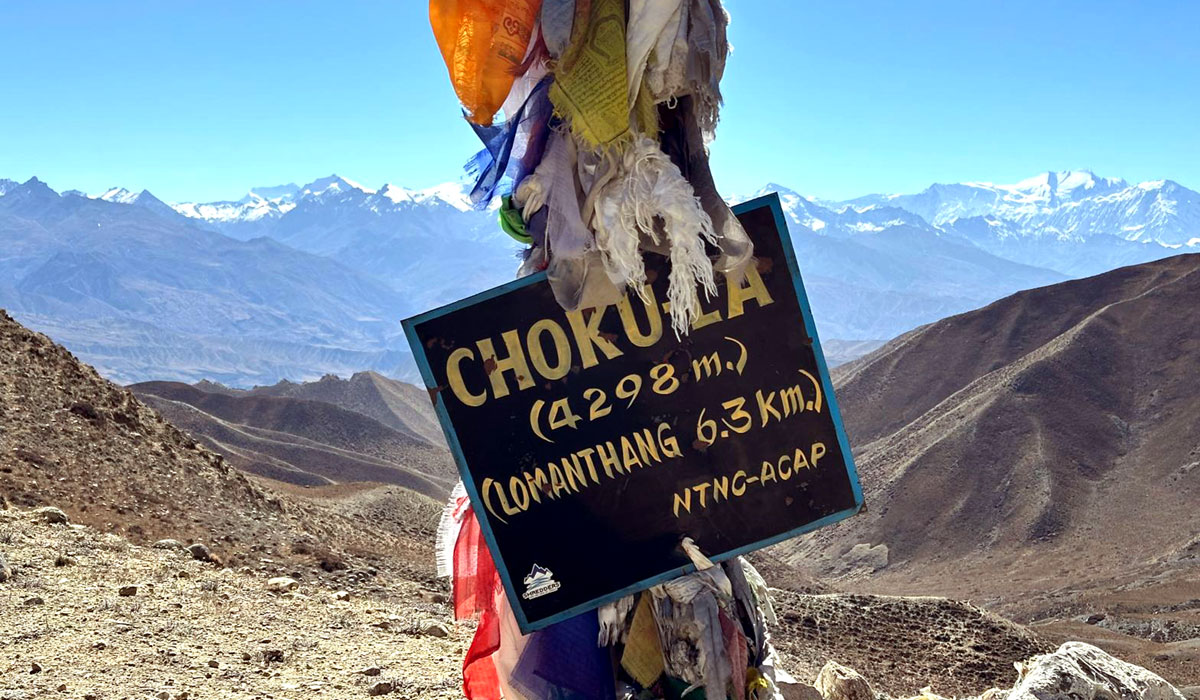
Hidden Caves
One of the central attractions of the Upper Mustang region is its hidden caves carved in the cliffs. Long ago, people used these caves as homes, places to pray, and storage. You can find paintings, statues, and old items showcasing the history of this region. Caves are part of the region's history and spirituality.
Muktinath Temple
Muktinath is one of the holy places of Nepal, located at an altitude of 3800 meters. This temple is believed to have originated in the 19th century. It is an important religious site for both Hindus and Buddhists. This temple is renowned for its 108 water spouts, which people believe can wash away all their sins and purify them. This is a Vishnu temple, where people also believe that a curse caused Lord Vishnu to turn into stone. Buddhist people also believe that the great sage Guru Rinpoche meditated in the Muktinath temple.
Annapurna and Dhaulagiri views
The upper mustang lies between the two highest Himalayan ranges, Dhaulagiri and Annapurna, in Nepal. It offers breathtaking views of snowy peaks with clear skies, making it the perfect choice for trekking. It offers a chance to take a closer look at the two Himalayan ranges without going for the base camp trek.
Ancient Trade Routes
Upper Mustang was once a trading route for India and China. During the 7th and 9th centuries, this region was part of the Tibetan Empire, and due to its strategic location, it provided easy access to Tibet for trading purposes. This place was a main trading center earlier, making it one of the developed parts in ancient times. This region facilitated the trade of salt, wool, and other items.
Medicinal plants and herbs
Upper Mustang is a mountainous area and is popular for various medicinal herbs. This region is home to variety of rare spices of medical herbs. These types of pants are used by local people of the Mustang region for both physical and spiritual purposes. The following section discusses some of the medicinal herbs:
- The Upper Mustang Region is home to juniper shrubs. This region also has juniper, which can cure various diseases like heartburn, kidney stones, indigestion, etc.
- One of the most famous and expensive medical fungi in this region is Yarsagumbha. People use it for various purposes, such as boosting energy, improving immune function, treating respiratory disorders and addressing kidney issues. The forests of Upper Mustang are often home to Chilgoza, a pine nut. People use it to enhance physical endurance and improve mental clarity.
- Snow lotus is a rare and beautiful flower that grows in the high altitude of the upper Mustang region. Traditional Tibetan medicine uses it to relieve pain.
Kali Gandaki River
Trekking in the upper Mustang region is closely associated with the Kali Gandaki River. The famous Kali Gandaki Gorge is a pathway for the Upper Mustang and Annapurna Circuit treks. Hinduism and Duddhism regard the Kaligandaki River as sacred. Only on the bank of the Kaligandaki River in Nepal can one find Shaligram, one of the holy stones believed to be a symbol of Lord Vishnu.
How can I prepare for the Upper Mustang Trek in Nepal?
You must prepare yourself physically and mentally before embarking on any type of trek in Nepal. You need to coordinate with a reliable trekking company for your trip to Upper Mustang. To determine if you can trek, access your fitness. Consult with your doctor about your health condition before going for any type of trekking journey. Keep yourself informed about the time and weather conditions for your trekking journey. Adjusting to the high altitude is one of the crucial factors for your trek.
To avoid altitude sickness, take time to adjust to the altitude and move slowly. You should always stay hydrated in order to adjust your body to the altitude. While doing a trek, one should avoid drinking alcohol or smoking.
Is the Trek to Upper Mustang Difficult?
The trek to Upper Mustang is considered moderately difficult. The trek reaches the altitude of 4000 meters, which can cause altitude sickness. The trekking path is also rough and rocky. This is a very remote area with fewer facilities and limited access to medical services.
The weather can be unpredictable, bringing with it strong winds and extreme cold. Despite the popularity of the Upper Mustang Trekking route, the basic services available in this region may not meet your needs. The trek involves walking for 5-7 hours, depending on your itinerary, and can be physically challenging.
Despite these challenges, trekkers find the Upper Mustang trek rewarding due to its cultural, historical, and natural significance. With proper preparation, you can explore the beauty of Upper Mustang while enjoying your trekking journey.
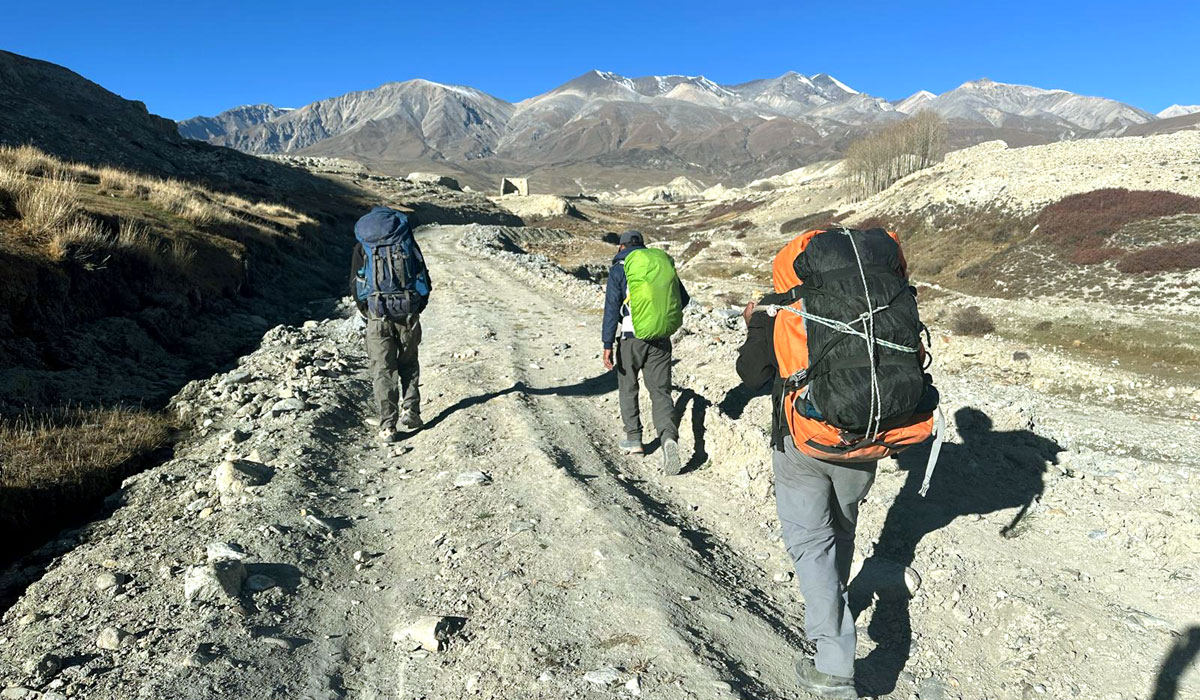
Useful Tips for your Upper Mustang Journey
The Upper Mustang is an amazing journey to the Himalayan region of Nepal. It is rich in culture, history, and natural beauty. While exploring this amazing part of Nepal, you need to know some things in advance. Here are some useful tips for your trekking journey in Upper Mustang:
- Get the essential permits for your trek ( our company will take care of this)
- Choose the best time to trek with good weather conditions.
- Stay hydrated and walk slowly in order to avoid altitude sickness.
- Pack warm clothes, hiking shoes, and sunscreen to protect yourself from cold and sunburn.
- Respect local culture and dress modestly in cultural heritages.
- Hire a reliable trekking Guide and porter service.
- Always carry a water bottle with yourself.
- Train in advance to get used to walking for long hours.
